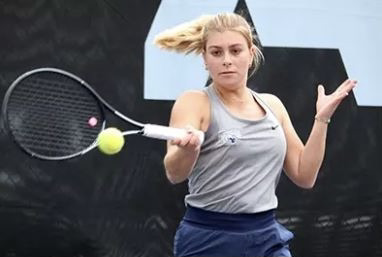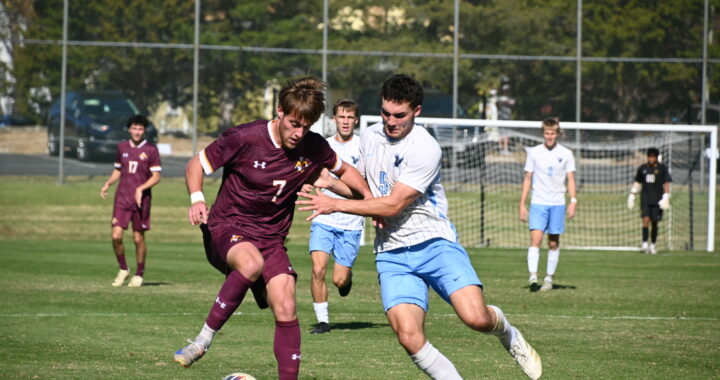DIII schools support academic success of student-athletes
3 min read
Sophomore Gabriel Soriano and senior Curran Smolinsky, members of the men’s soccer team, study in the Hurley Convergence Center. / umw.edu
By RAVI MAKAM
Staff Writer
When an athlete says they attend an NCAA Division III school, there is sometimes a negative connotation about lower status and less money. This leads to a misunderstanding of what it actually means to be a DIII school.
In 1973, the NCAA split to the three main divisions from just having two; College and University Divisions. The main difference is that DIII schools do not offer athletic scholarships while DI and DII do offer athletic scholarships. This might turn off many prospective athletes, but one of the biggest misunderstandings is that DIII schools can invest more into the academic life of an athlete, making school and athletics more equal.
One of the biggest attractions to DI is the exposure and the prestige, which adds to the negative perception of DIII athletes who do not receive the same coverage on television or on social media. Fewer than two percent of athletes from the NCAA actually make into professional sports leagues. It is a tough mountain to climb to the pros, no matter what school or division a student-athlete attends.
Mary Washington is a DIII school. Accounting major and senior on the golf team, Austin Matz said, “I chose a Division III institution because I knew I could get a good education while being able to play for an NCAA program.”

This idea is shared by many, as noted by the NCAA, almost 40 percent of all student-athletes are in DIII.
“I don’t feel any negative connotation being associated with a Division III program because I feel that this level offers advantages not seen at other levels. Some of the advantages of being part of a Division III program are the chance to still play and compete at one of the highest levels in sports,” added Matz. He explained that at DI schools, he might not have gotten the opportunity to start or see much game time.
The biggest advantage of going to a DIII school is the graduation rate. According to a study conducted by the NCAA, DIII athletes graduate at a rate of 82 percent, compared to the total average of 62 percent. This focus on education is vital to recruiting to these smaller schools.
This was a major reason senior accounting major Jason Gunitu decided on UMW. Guintu said, “I decided to come to a DIII school to further my competitive golf career while at the same time, work towards a degree at a prestigious university.” At DI schools, it is also less likely for student-athletes to pursue STEM-related majors, while a higher rate of DIII student goes for tougher math and science-related majors.
At the UMW, the athletic program tries to promote a strong educational experience as well as highly-ranked athletics. However, they are not able to give out athletic scholarships.
“I do feel like there’s a little bit of a negative connotation with DIII athletes because we’re sacrificing our time to these sports for no athletic scholarships in return,” said Guintu.
DIII programs can have their negative sides like not receiving athletic scholarships or gaining the status as the DI schools get. However, there are many advantages to attending a DIII school. A student-athlete is more likely to graduate on time, achieve a higher GPA and obtain a higher education past undergraduate studies.



